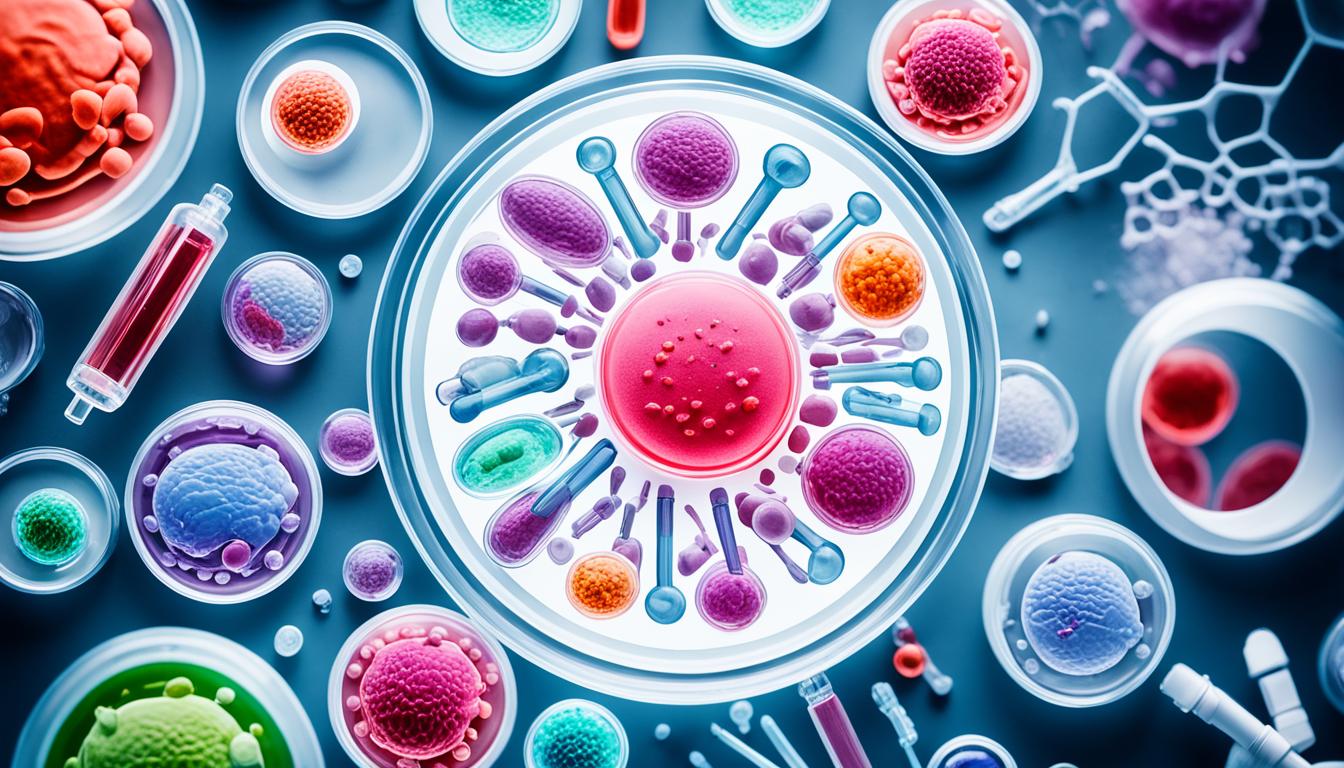Muscular dystrophy (MD) is a genetic condition affecting over 30 inherited types. It causes steady weakness and muscle mass loss. This disorder mainly affects males. Duchenne muscular dystrophy (DMD) is the most common type, hitting about 1 in 3,500 male births.
MD shows up with various symptoms that range in type and how severe they are. Signs might start with a waddling walk and muscle pain. Kids might have trouble running and jumping, and they may fall often. Over time, walking can become tough, and issues with breathing and the heart might appear.
At the moment, there isn’t a cure for MD. But treatments can help ease symptoms and make life better. Physical therapy can boost movement. Drugs can help with pain and stiffness. And, there are tools like wheelchairs and walkers. Gene and stem cell research are also bringing hope for new treatments.
Key Takeaways:
- Muscular dystrophy is a genetic disorder causing progressive weakness and loss of muscle mass.
- Duchenne muscular dystrophy (DMD) is the most common form, affecting approximately 1 in 3,500 male births.
- Early symptoms include a waddling gait, muscle pain, difficulty with running and jumping, and frequent falls.
- Treatments such as physical therapy and medication can help manage symptoms and improve quality of life.
- Ongoing research in gene therapies and stem cell therapy provides hope for future treatment options.
Types of Muscular Dystrophy and Treatment Options
Muscular dystrophy (MD) comes in various types, each showing different symptoms and progression. Among the common ones are:
- Duchenne muscular dystrophy (DMD): It’s the top type, mostly seen in boys. It leads to muscle loss, making boys need a wheelchair around age 12.
- Becker muscular dystrophy: This affects boys as well, but it’s slower than DMD and symptom severity varies.
- Myotonic dystrophy: It’s known for muscle stiffness, weakness, and can affect the heart and other organs.
- Limb-girdle muscular dystrophy: It impacts the shoulders and hip muscles, leading to movement challenges.
No cure exists for muscular dystrophy yet. However, treatments can help manage symptoms and enhance life quality. Certain medications, like gene therapies, aim to slow muscle loss. Physical therapy is crucial for better movement, stopping muscle tightening, and keeping flexible.
Devices that help with breathing can tackle respiratory issues linked to MD. For improved mobility, wheelchairs and walkers are recommended.
Research in the MD area is focusing on new, promising therapies. Stem cell studies aim to heal damaged muscles. Gene therapy wants to fix the genetic flaws that cause MD. Also, drugs may soon delay muscle loss and enhance muscle function.
With these treatment steps and ongoing research, there’s hope for those with MD. Managing symptoms well, improving mobility, and slowing muscle loss let people with MD have full lives. They can also stay independent for longer.
Treatment Options for Muscular Dystrophy:
| Treatment | Description |
|---|---|
| Medications (gene therapies) | Target specific genes to slow down muscle wasting |
| Physical Therapy | Improves mobility, prevents muscle tightening, and maintains flexibility |
| Breathing Assistance Devices | Helps with respiratory problems often associated with muscular dystrophy |
| Mobility Aids | Wheelchairs and walkers to aid individuals with muscle weakness |
Living with Muscular Dystrophy and Future Outlook
Living with muscular dystrophy is tough, for both the individual and their family. It brings mobility issues, muscle weakness, and reliance on aids. It’s crucial to have support and resources available to help.
The Muscular Dystrophy Association (MDA) is a key support. They provide help emotionally, physically, and financially. They offer support groups, counseling, help with bills, and access to research.
Treatments for MD are getting better, increasing life expectancies. But, this varies widely by type and severity of the disease. There’s hope in new therapies like gene replacement and stem cell research.
Though there’s no cure yet, the push for new treatments is strong. Future quality of life could greatly improve. With support, the outlook for those with MD is brighter.

